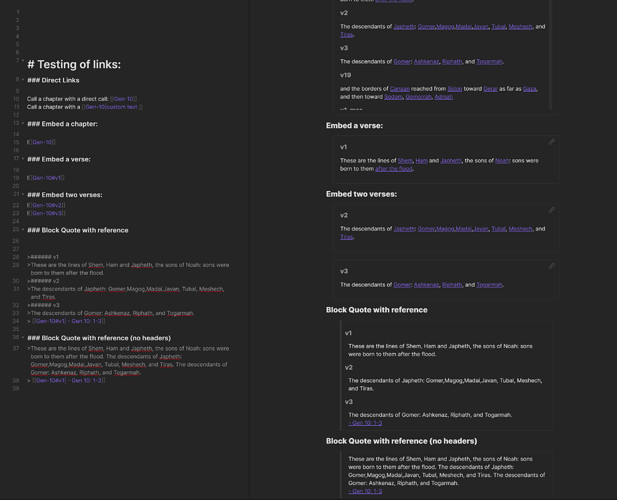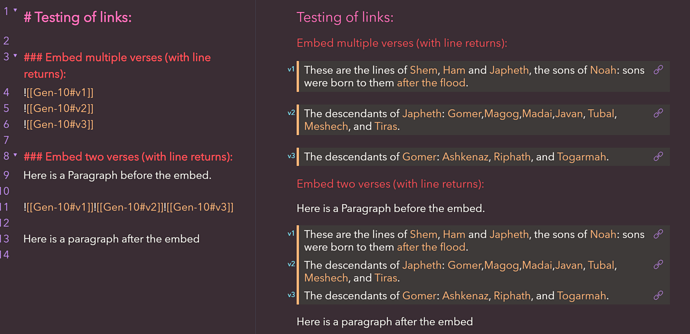You are most welcome. I love seeing different approaches to workflow and study and enjoy the discussion. It’s interesting to see the more granular approach vs the broad approach. This made me think about my own method.
Thoughts on breakdown of files:
I break my files down by chapter primarily because this is the closest to dividing by complete and distinct thought. Chapters are generally the dividing line between one thought, theme, idea, story,etc and another.
I agree that dividing by verse is too small (even without system resource concerns). Many verses aren’t even a complete sentence and lack context. When I look at how the Text is used by the sages I. When a rabbi/teacher/sage would reference a passage they would be drawing from the context of that reference. If quoting a verse from a Psalm, the whole Psalm is referenced. (Similar to who when we quote a movie, we include all of the characters, plot, etc of that moment into the connotation of the quote)
Rom 3:10-18 is a good example of this. When reading at first, it appears as if Paul is waxing poetic and just saying the same thing eight different ways. The quotes are essentially the same in content taken in isolation, but each has their own context so the last reference sticks out.
This is something I’ve been tinkering around with since this thread started. I suppose it depends on your definition of “convienently” is going to be. ![]()
CSS can do a few things here that would allow for customization of how things look. First, lets look at some embedding/linking options without any CSS applied:
Without CSS:
Creating a block quote via copy/paste then formatting the text looks better, but takes more work and embedding two verses in a row is less than ideal. With some CSS magic though:
With CSS:
You can apply whatever theme you want. I’m using a higher contrast theme here so it’s easier to see the elements. Here’s the code I used to pull out the verse numbers:
.markdown-embed-content h6{
position: absolute;
font-size: small;
right: 101%;
margin-top: 3px;
}
I always use heading 6 for verse numbers so this calls only heading 6 and only when it falls inside of embedded content. (I can set how it shows normally elsewhere).
- The ‘absolute’ postion removes them from the normal flow so the text can move up to the top.
- font-size: small takes the normal css for h6 and makes it smaller
- the right: 101% positions the element essentially 1% to the left of the leftmost edge.
- margin-top 3px moves it down 3 pixels so it lines up better.
You could change the position to put the verse numbers off to the right over by the link too or hide them all together. Whatever style you are looking for. Let me know if you have any CSS question. I’m always happy to help.
So ESV is an interesting case. For personal use, the entire text is available online for free. There are limits to how much you can post online or in print, however. I also found out today that they have an API too. There are tons of options for importing text as @Mike mentioned. You can find copyright and all that at the ESV Site

